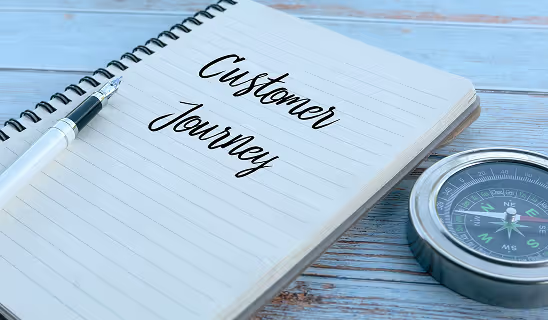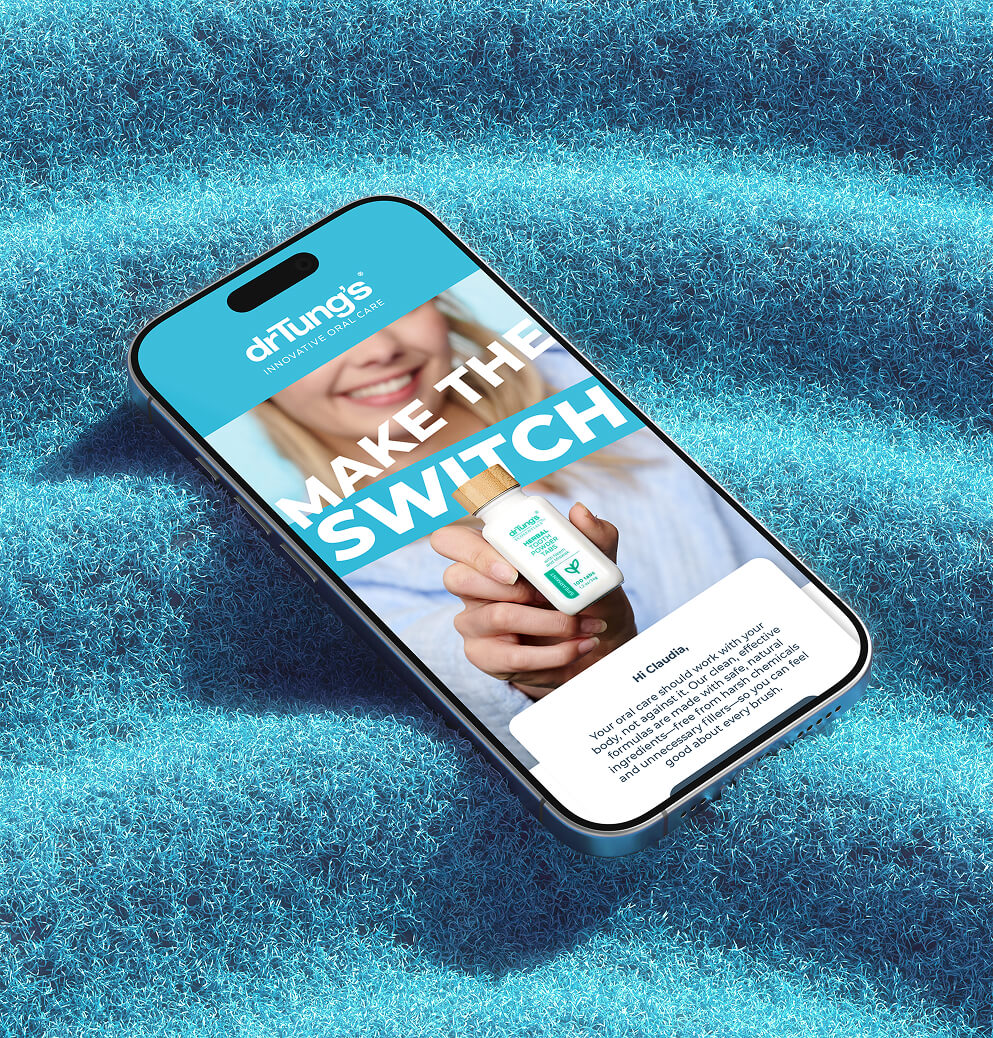How to Get Started with Inbound Marketing
08/12/2025
Marketing Strategy
Discover how inbound marketing can help you attract, engage, and delight customers while driving sustainable business growth.

In this article, we'll walk you through the basics of inbound marketing and give you some tips for getting started with your own strategy. Whether you're a small business owner or a marketer looking to get ahead of the pack, there's something here for everyone. So let's dive in! Inbound marketing is an increasingly popular strategy for businesses looking to boost their online presence. It involves creating content that attracts and engages your target audience, thereby building trust and interest with potential customers over time.
.png)


The ultimate guide to inbound marketing for beginners!



This can be a great way to build brand awareness, enhance your authority in your field, and ultimately grow your customer base.
Inbound marketing has gained momentum in the past few years as more and more small businesses try to capitalize on the success of some of the biggest online brands.
This up-and-coming approach to online presence has also gained a growing number of die-hard fans. Unsurprisingly, many business owners and marketers ask, "How can I get started with inbound marketing?"
If you’ve stumbled upon this article, chances are you’re feeling somewhat perplexed about how to kickstart your inbound strategy.
Inbound marketing is a long-term commitment that demands significant effort and can seem daunting to those new to the concept.
It not only requires a substantial investment of time but also a deep understanding of SEO and the mechanics of search engines. But, if you're geared up for the challenge, keep reading!
Our startup branding agency, guides you through the intricacies of inbound marketing, highlighting key considerations, starting points, and steps to embark on your journey.
What is Inbound Marketing?
Before we delve into how to do inbound marketing, let’s first learn what it is exactly.
Inbound Marketing is an effective tool for any business that helps generate leads and sales through your website.
It is a strategy that focuses on attracting customers to your website rather than paying for ads to get them there. The idea is to publish helpful content that educates your audience and entices them to you.
These are the leads that come to you instead of you actively pursuing them.
Inbound marketing is one of the most effective ways to grow your business online. It’s cheaper, more effective, and easier to measure than traditional outbound marketing tactics like PPC advertising or cold calling.
It’s also a great way to establish yourself as an authority in your industry. Once people know you have valuable information they want, they’ll come back for more — which is where you can sell them something.
If done well, inbound marketing can help drive more traffic to your website, increase the amount of time visitors stay on the site, and even help convert those visitors into paying customers.
Types of Inbound Marketing
There are 3 main types of inbound marketing:
Social media marketing
Social media marketing is one of the most effective ways to promote your business and attract new customers.
Social media marketing involves using platforms like Facebook, Twitter, Instagram, LinkedIn, and YouTube to increase brand awareness and drive traffic to your website.
Social media marketing is about creating engaging content to share with your audience. This can be anything from a blog post to an image or video.
You want to ensure that your posting is relevant to your audience and as engaging as possible. If you don’t have an active social media presence, it can be difficult for people to find out about your business.
Social media marketing includes more than just posting on social media, though. It also includes improving the engagement on each post that you create.
This means ensuring that each post has a good picture or video attached so people want to see what else you have to say about the topic or product you are promoting.
Social Media Marketing Benefits












Social media marketing has many benefits, including increased brand awareness, increased website traffic, improved search engine rankings, increased customer retention rates, and improved sales conversion rates (among others).
Content marketing
Content marketing is creating and distributing valuable content to attract and acquire customers.
It involves creating blog posts, videos, or podcasts that educate people about specific topics related to your business.
For example, suppose you sell products designed for seniors.
In that case, you could write blog posts about how to live an independent lifestyle as a senior citizen or share tips on how aging affects our bodies and minds differently than when we were younger.
By creating valuable content that educates people about topics relevant to your business, you'll be able to build trust with potential customers who might buy your products or services.
Content marketing can also help you build a community of people interested in your business who want to learn more about your offer.
If you're writing blog posts or creating podcasts, those content pieces will be shared on social media platforms like Facebook and Twitter, which can help drive traffic back to your site.
Search engine optimization (SEO)
Search engine optimization (SEO) is a type of inbound marketing that uses search engines to drive traffic to a website.
It's often used with other tactics, such as social media and content marketing, to increase exposure and bring in potential customers.
SEO involves ensuring that your website is optimized for search engines to appear in the results when people search for relevant terms.
Many factors affect your ranking on search engines, including the keywords you use, the quality of content on your site, and its design.
SEO aims to help people find your business or website when they're looking for products or services like yours.
This can boost sales by increasing brand awareness and improving customer trust through content marketing strategies such as blog posts, videos, or infographics.
Getting Started
Create your buyer personas
Buyer personas are fictional profiles that represent the characteristics of your ideal customer.
You can use this information to help shape your content strategy and decide which channels will be most effective for reaching out to them.
For example, suppose you have a buyer persona that describes an executive looking for ways to improve productivity at their company. In that case, you might want to focus on social media channels like Twitter and LinkedIn because those are places where CEOs and CMOs tend to share relevant articles and insights.
This will also help you decide what kinds of content work best for them and what type of language they use when looking for information about your industry or product.
Determine your goals for inbound marketing
Before diving in and creating content for your website, you must know precisely what you're trying to accomplish with your inbound efforts.
This will help determine what content you need to create and how often you'll need to post it on your site.
Do you want to generate more leads? Improve customer satisfaction? Increase sales? Once you’ve determined your goals, it’s time to decide what will help you achieve them.
If your goal is to generate more leads, then you need to focus on creating content that attracts visitors and makes them want to sign up for more information.
You can use tools like HubSpot’s Website Grader or Google Analytics to track your success and monitor visitor behavior on your site so that you can tweak things accordingly.
If your goal is improving customer satisfaction, then you should focus on creating content that helps customers solve problems and learn about new products or services that will make their lives easier (or at least more enjoyable).
In this case, it would be helpful if you kept track of user feedback through surveys or forums to further improve the experience they have when interacting with your brand online.
Want to learn more about brand platforms, Brand Strategy and Brand Identity? Keep reading!
If you need help with your companies brand strategy and identity, contact us for a free custom quote.
Write content that provides high value

Once you know who your prospects are and what things they care about, it's time to start creating great content that will engage them and keep them coming back for more.
You should always ensure that each piece of content solves a problem or addresses your target audience's issue — whether it's how-to guides or helpful tips for using your product or service.
The more helpful information you provide, the more likely visitors are to share the content with their friends or colleagues.
You can also ensure your content is optimized for search engines, which will help increase its visibility on Google and other search engines.
Audit, Analyze, and Improve
One of the steps in creating a solid inbound marketing strategy is to figure out what content is already available for your audience — and then find ways to improve it.
This process should be ongoing as you continue to produce new content and improve upon what you already have. One way to conduct the audit is using Google Analytics (GA).
GA will tell you which pages on your website are getting the most traffic and how many people are clicking through each link in your navigation bar or sidebar.
The more clicks a page receives, the higher its ranking is likely to be — so if you want to boost traffic from a particular page, start by doing some keyword research and optimizing that page accordingly.
Create Lead Nurturing Emails and Workflows
Inbound marketing isn't just about blogging or generating leads but also about lead nurturing.
Lead nurturing is a strategy that involves regularly communicating with your audience to nurture them through the buyer's journey and help them get to know, like, and trust you.
It's an essential part of inbound marketing. It's crucial to create lead nurturing emails and workflows because they help you:
- Identify prospects who need your help
- Personalize messages for each person, so they feel special
- Keep in touch regularly without being spammy
Lead nurturing emails are designed to help you build relationships with your leads, educate them about your business, and encourage them to take action.
Lead nurturing emails should be personalized based on what stage the prospect is in their buying process, where they are geographically located, and what they have done with previous communications with you.
The most common way of doing this is through an email drip sequence (also known as an autoresponder series). Here’s an example:
[Prospects are introduced to your company and offered a free product or service trial. They sign up for it and provide their email address. You send them an automated welcome email that includes a link to download a white paper on the topic they were interested in.]
In this example, we’re using a simple welcome email with a link to download the white paper. This is just one way you can use lead nurturing emails.
You can use popular software such as HubSpot or Drip to create and manage your email workflows.
Inbound marketing can help you reach more customers and grow your business

Establishing and maintaining a robust online presence in a digital world has become increasingly important.
How we perform content creation, curation, and distribution depends on our ability to build relationships with people who are interested in the things we do and consistently engage with that audience.
The philosophy behind this approach is that any marketer should work together with the customer, building relationships and setting themselves apart from the competition by providing customers with the type of value they really appreciate.
If you need help with Inbound Marketing, it would be wise to enlist the help of professionals such as Marketing Agencies.
Inbound Marketing Tools and Resources
To get started with inbound marketing, there are a few key tools and resources that you'll need.
These include a website platform, content management system (CMS), and social media accounts.
You can also use various content creation tools to help you create compelling blog posts, infographics, videos, and more.
Some examples of popular inbound marketing tools and resources include HubSpot, Hootsuite, WordPress, and Canva.
To learn more about how to use these platforms effectively, be sure to do some research online or check out a few online tutorials.
If you're serious about using inbound marketing to grow your business or brand, then it's important to commit to the process and consistently create high-quality content that engages your target audience.
This may involve investing in training or professional development courses, hiring a marketing agency, or partnering with other businesses that have complementary services or products.
Inbound Marketing Experts
Brian Dean of Backlinko and Neil Patel of Quicksprout are two experts who have had tremendous success with inbound marketing.
Both have built massive online followings, generated millions of website visitors, and helped countless businesses achieve their growth goals through effective inbound strategies.
If you're looking to learn more about inbound marketing or find experienced marketers who can help you build your strategy, be sure to check out the blogs and resources provided by Brian Dean and Neil Patel.
With their guidance, it won't be long before you're well on your way to achieving success with inbound marketing!
At the end of the day, however, it's worth remembering that success with inbound marketing takes time and effort.
But with the right approach, tools, and resources, you can build a thriving online presence that will help your business grow and thrive for years to come!
Using AI for Inbound Marketing
As with many areas of business, artificial intelligence is playing an increasingly important role in inbound marketing.
AI-powered systems can analyze large amounts of data to find patterns and make predictions about your target audience, helping you create more relevant and personalized content that resonates with them.
Some companies are even using AI to automate the creation of blog posts and social media content, thereby saving time and resources that can be invested into other marketing activities.
Whether you're looking to implement AI on a small scale or partner with an expert who can guide you through the process, there are many valuable tools and resources available to help your inbound marketing efforts thrive.
Ultimately, it's clear that inbound marketing is here to stay.
If you're looking to grow your business or brand online, then it's definitely worth considering how inbound marketing can help you achieve your goals. With the right approach, tools, and resources, there's no limit to what you can accomplish!
How Google Ranks your Inbound Marketing Content
Google and other search engines use a variety of complex algorithms to rank the content that appears on their search results pages.
These algorithms take into account factors such as keyword optimization, user engagement metrics, and website traffic metrics.
By carefully optimizing your content for keywords, encouraging visitors to interact with it through shares, comments, and links, and tracking important metrics such as website traffic, you can ensure that your inbound marketing efforts are successful.
Of course, it's also important to keep up with changes and innovations in Google's search algorithms to make sure that your content continues to rank well.
Some of the most recent major updates include Google RankBrain (a machine learning algorithm), Penguin (an update focused on decreasing the importance of backlinks), and Hummingbird (a major change to Google's semantic search capabilities).
So if you're looking to grow your business with inbound marketing, it's essential to stay up-to-date with Google's ever-evolving search landscape.
By keeping an eye on industry changes and trends and investing in the right tools and resources, you can ensure that your inbound marketing strategy is as successful as possible!
The Branded is a full-service digital marketing agency that provides strategy, design, and development services, among many others.
We’re able to help you with everything from constructing your inbound marketing strategy to making sure you have consistent branding across all your media channels and much more.

Sloane Avery
As entrepreneurs, they’ve built and scaled their own ventures from zero to millions. They’ve been in the trenches, navigating the chaos of high-growth phases, making the hard calls, and learning firsthand what actually moves the needle. That’s what makes us different—we don’t just “consult,” we know what it takes because we’ve done it ourselves.
Want to learn more about brand platform?
If you need help with your companies brand strategy and identity, contact us for a free custom quote.
We do great work. And get great results.
+2.3xIncrease in revenue YoY
+126%Increase in repurchase rate YoY








+93%Revenue growth in first 90 days
+144% Increase in attributed revenue








+91%Increase in conversion rate
+46%Increase in AOV








+200%Increase in conversion rate
+688%Increase in attributed revenue












